► GranTurismo rebooted with Folgore electric power
► No V8 thunder but you do get 751bhp instead
► First UK drive – does it deliver?
At one time the Maserati GranTurismo Folgore would’ve been unthinkable, but Maser’s reinvention of itself as a producer of some of the best electric cars seems to be accelerating. For the brand, it’s a race against time as a self-imposed petrol cut-off date of 2028 looms, after which it says it’ll only build EVs. Tick tick tick…
As an automotive manufacturer renowned for its engines, getting its electric models right is paramount. Weaknesses won’t be accepted, so it’s going all in with electric versions of both its sports cars and SUVs under the (best Italian accent at the ready…) ‘Folgore’ name – translating as lightning. The first of these to go battery powered was an electric version of its large, iconic GT car, the GranTurismo.
We had to wait for it, but we’ve now tested the Maserati GranTurismo Folgore on UK soil. Read on for the full review from CAR, or head over to our how we test cars page to find out everything you need to know about how we reached our verdict.
At a glance
Pros: Brilliant GT abilities, clever powertrain, the glamour
Cons: Broken touchscreen in our test car, quality doesn’t live up to the price
What’s new?
Maserati has a two-pronged approach to its powertrains for the time being, so while the GranTurismo might be available with this clever, shiny EV powertrain for the first time, combustion remains in the form of the V6 Nettuno engine from the MC20. It’s the same story in terms of petrol and electric availability on the Grecale SUV.
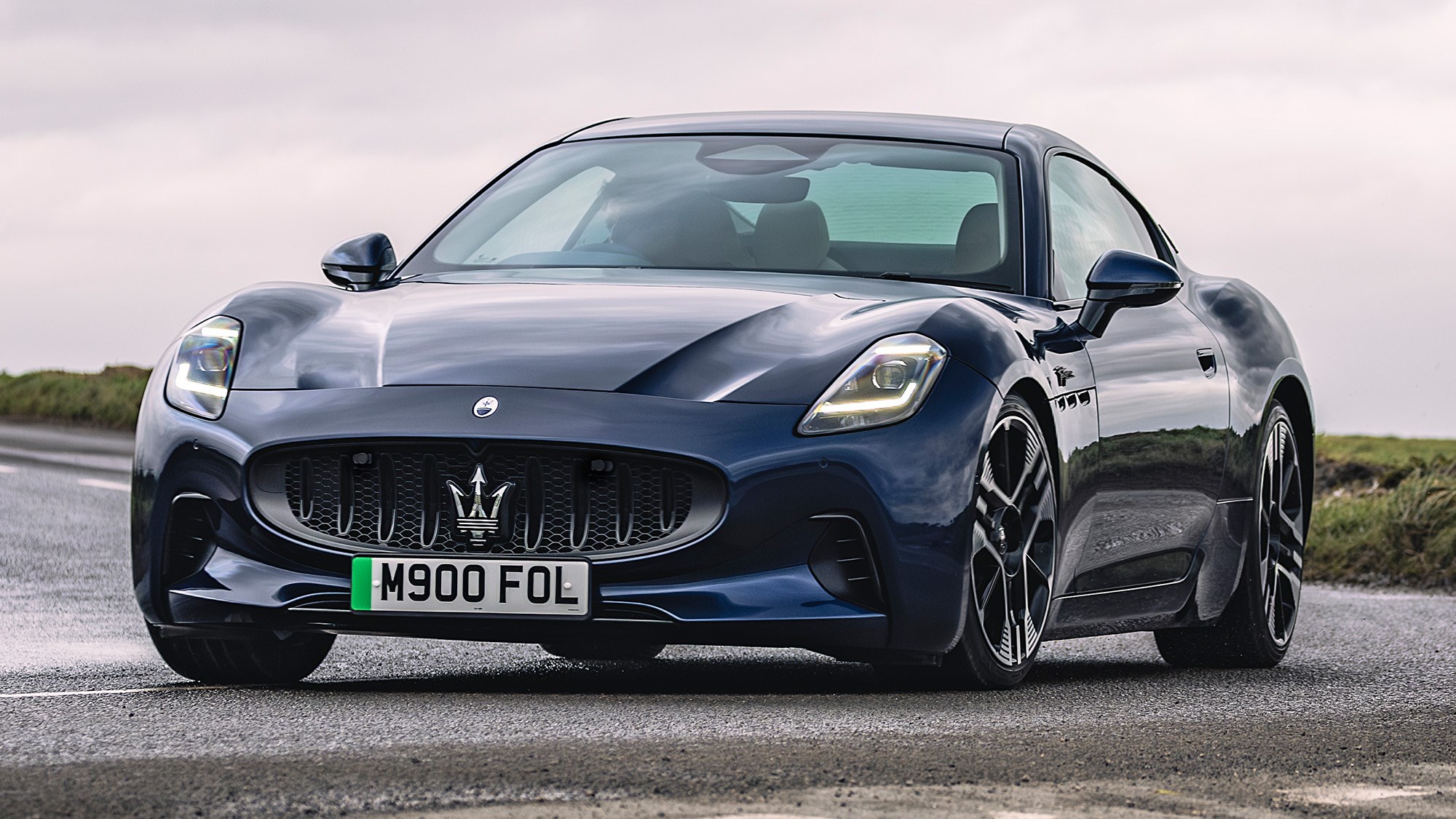
It’s a pretty complicated tale of engineering with the GranTurismo Folgore, though. It’s based on the same underpinnings as the ICE GT, a loose variation of the Alfa Romeo Giula’s Giorgio platform, yet somehow Maserati has managed to squeeze in three electric motors and a massive 92.5kWh battery.
While the general GranTurismo silhouette hasn’t varied much from the previous car, which first arrived in 2007, the interior has. Twin touchscreens appear like a folded book with the gear selector buttons nestled between them. It all looks pretty smart, but the fact plenty of features are shared with far cheaper Stellantis products doesn’t do it many favours.
What are the specs?
The Folgore sits at the top of the new GranTurismo line-up, with Maserati giving it the figures to ensure it deserves that positioning.
Using a clever three-motor powertrain (two at the rear and one at the front), it puts out 751bhp and 996lb ft of torque. It’s a significant uplift on the 490hp and 550hp you get from the V6 Modena and Trofeo models respectively.
The result unsurprisingly is some staggering performance figures. Sprinting from 0-60mph will take just 2.7 seconds and it’s capable of a 202mph top speed. That latter number is interesting as many EVs, even those with significant power, have much lower top speeds.
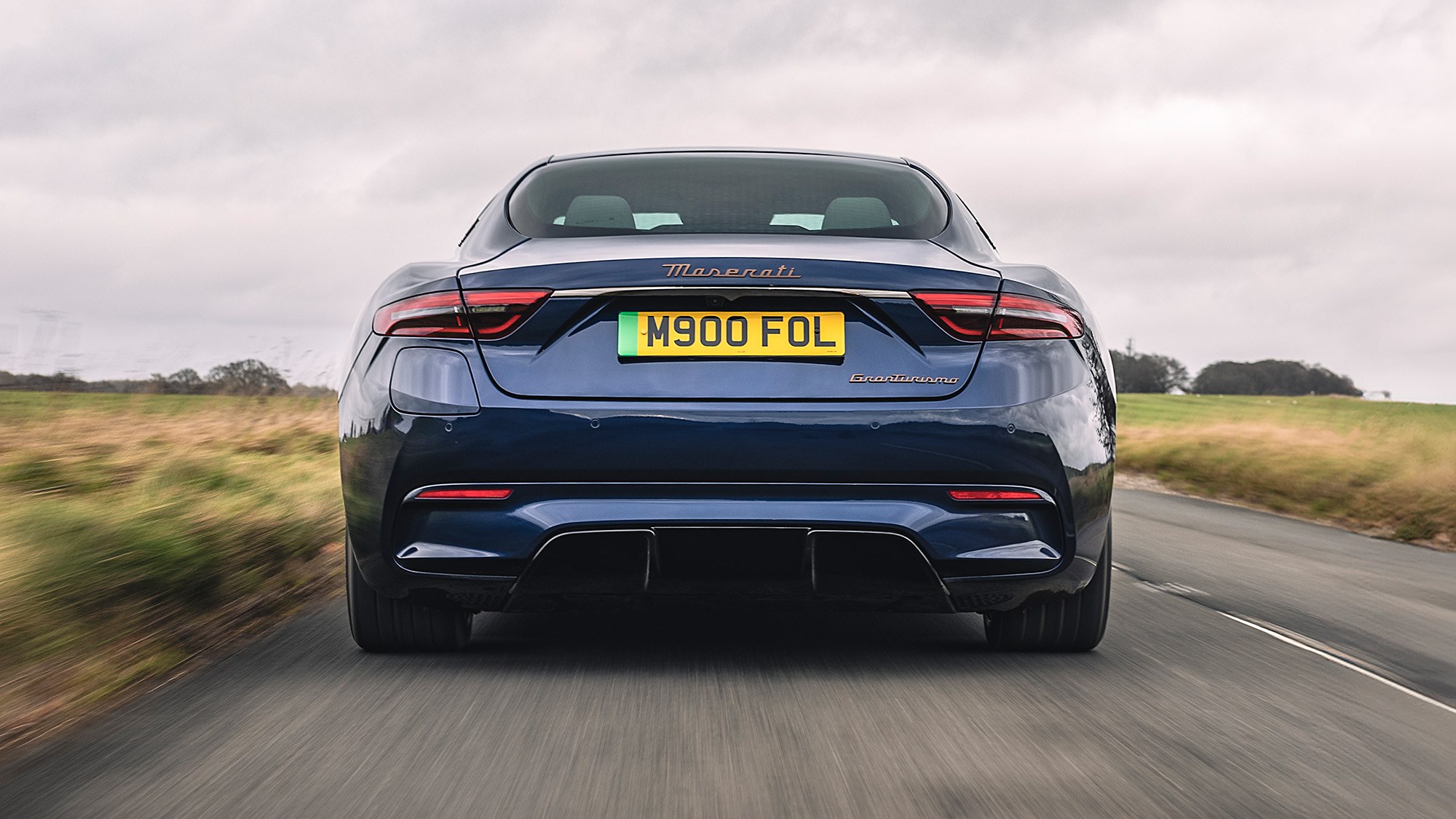
Now to confront the issue of range. Maserati has managed to squeeze in a huge 92.5kWh battery, which allows for a claimed 275-mile range. While that doesn’t sound masses on a ‘GT’ car, we were pleasantly surprised by its efficiency. A speedy run up the A1 saw average figures of 2.8mi/kWh, hardly figures to worry efficiency champs, but considering the performance, weight and speed, it’s not bad at all.
It should mean somewhere around 250 miles, which doesn’t sound all that great, but as the Folgore is equipped with an 800-volt charging infrastructure, maximum DC charging rates are 270kW – meaning a 10 to 80 per cent charge is theoretically possible in less than 20 minutes. We were stunned by the Folgore’s charging curve, as even at an 80 per cent state of charge, it was still pulling more than 100kW from a Gridserve charger. It should mean that it is possible to do longer trips without stopping to charge for much longer than you would anyway.
How does it drive?
The complexity of the Folgore should not be underestimated, and neither should its three-motor electric powertrain, which is till a bit of a rarity in the EV world. It derives tech from Maserati’s Formula E team and deploys one motor at the front with an open differential and two at the rear that enable torque vectoring.
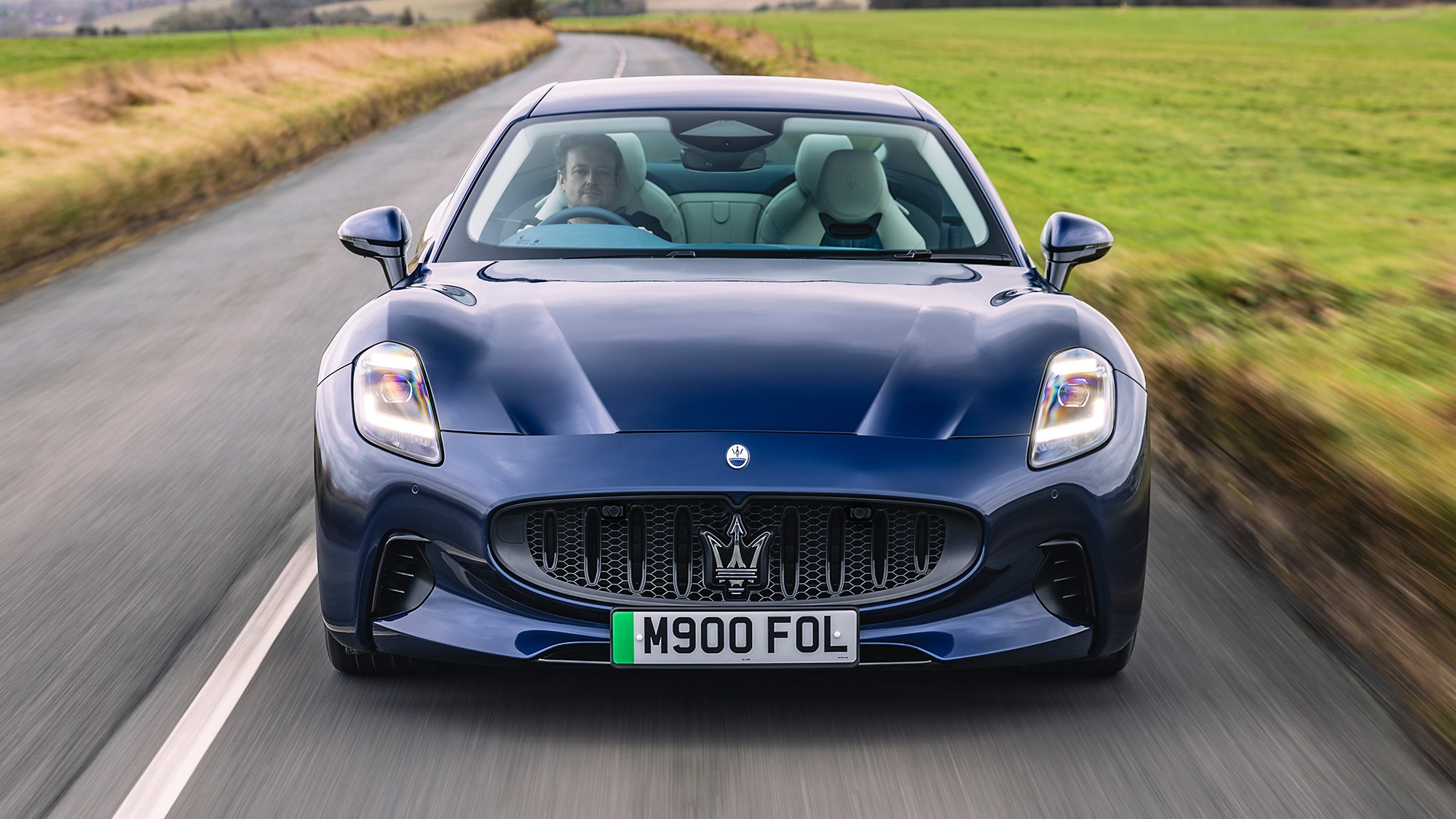
The result is impressive, on sharp bends if you boot the throttle coming out of a corner, you can really feel the torque being sent to a particular wheel, enabling you to deploy all that performance at times that sometimes defy physics. For a car that weighs almost 2.3 tonnes (not a figure to brag about – and around 450kg more than the base petrol GranTurismo), it’s staggeringly agile. It stays flat through the corners, and while you’re always aware of its sheer size, it’s impressive.
Three driving modes are at your disposal, controlled using a Porsche-like dial on the wheel, though lacking that tactility. GT limits power to 80 per cent, and is the best option most of the time. Sport is sharper and is best for fast road driving. Corsa winds back the safety assists and allows for fun skids, though feels more than controllable even on the road unless you drive like a loon.
Power reserves are every bit as insane as you expect, but there’s a very linear approach to the way the Folgore gathers speed (and very quickly). It doesn’t snap your neck or make you feel nauseous like a Tesla Model S Plaid, but it has enough power to leave loose items flying and passengers feeling uncomfortable. There’s a subtle sport sound, though nothing like Hyundai’s engine replicator in the Ioniq 5 N. That said, my time was cut short with the GranTurismo due to a dreaded puncture, and the sound department was one area that we hadn’t properly explored.
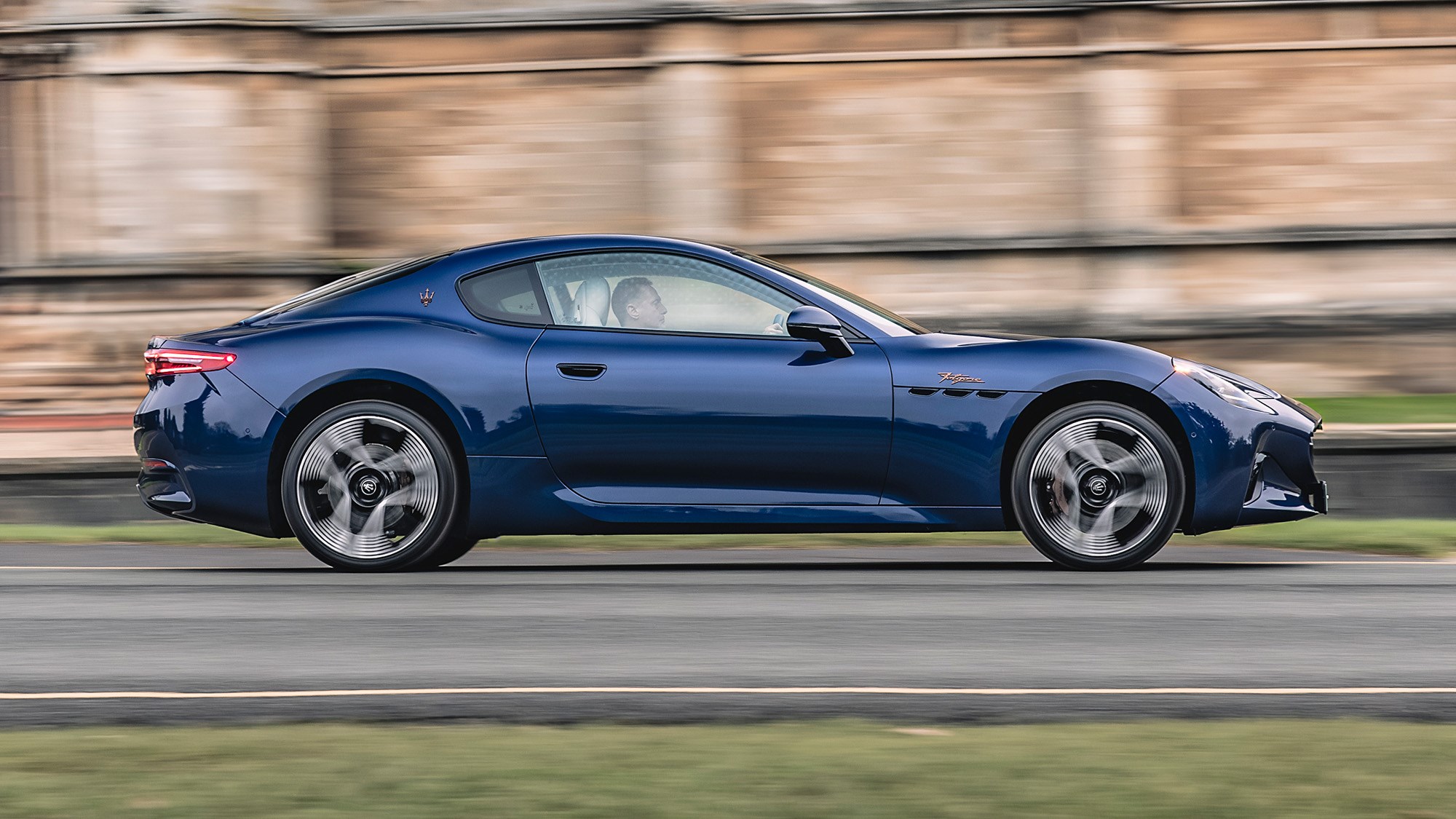
There’s some exceptionally strong regenerative braking action, and you control it through Maserati’s glorious aluminium steering paddles. Yes, the ones you’d usually use to change gear. They proved divisive among the team, though we think it’s great Maserati has managed to retain them. I’ve never used adjustable regen in an EV so readily.
But the Folgore’s best asset is the way it rides. Despite the savage acceleration, this is a car that beautifully eats up continental miles, and on UK roads it’s much the same story. The GT Folgore’s supple damping turns stormy B-road chop into glass-like lake water. On the motorway it’s heaven, but even country lanes are made light of in comfort and style.
Add the optional driver assist package with adaptive cruise control, and the GranTurismo could be a wonderful companion to the south of France. Just hope that the Ionity chargers are working.
What about the interior?
In a word, underwhelming. Aesthetically, the GranTurismo’s cabin looks great. Lots of crisp displays, a central clock and lots of copper-coloured detailing – the shade that the Folgore sub-brand has adopted.
But to interact with the controls is when things take a turn for the worst. Our test car’s touchscreen made one of those cheap Amazon knock-off iPad tablets look decidedly user-friendly. The screen was one of the least responsive I’ve ever encountered, with certain buttons requiring several multi-second long presses to activate. If I’d spent £180,000 on a Folgore and the screen was like that, I’d be fuming.
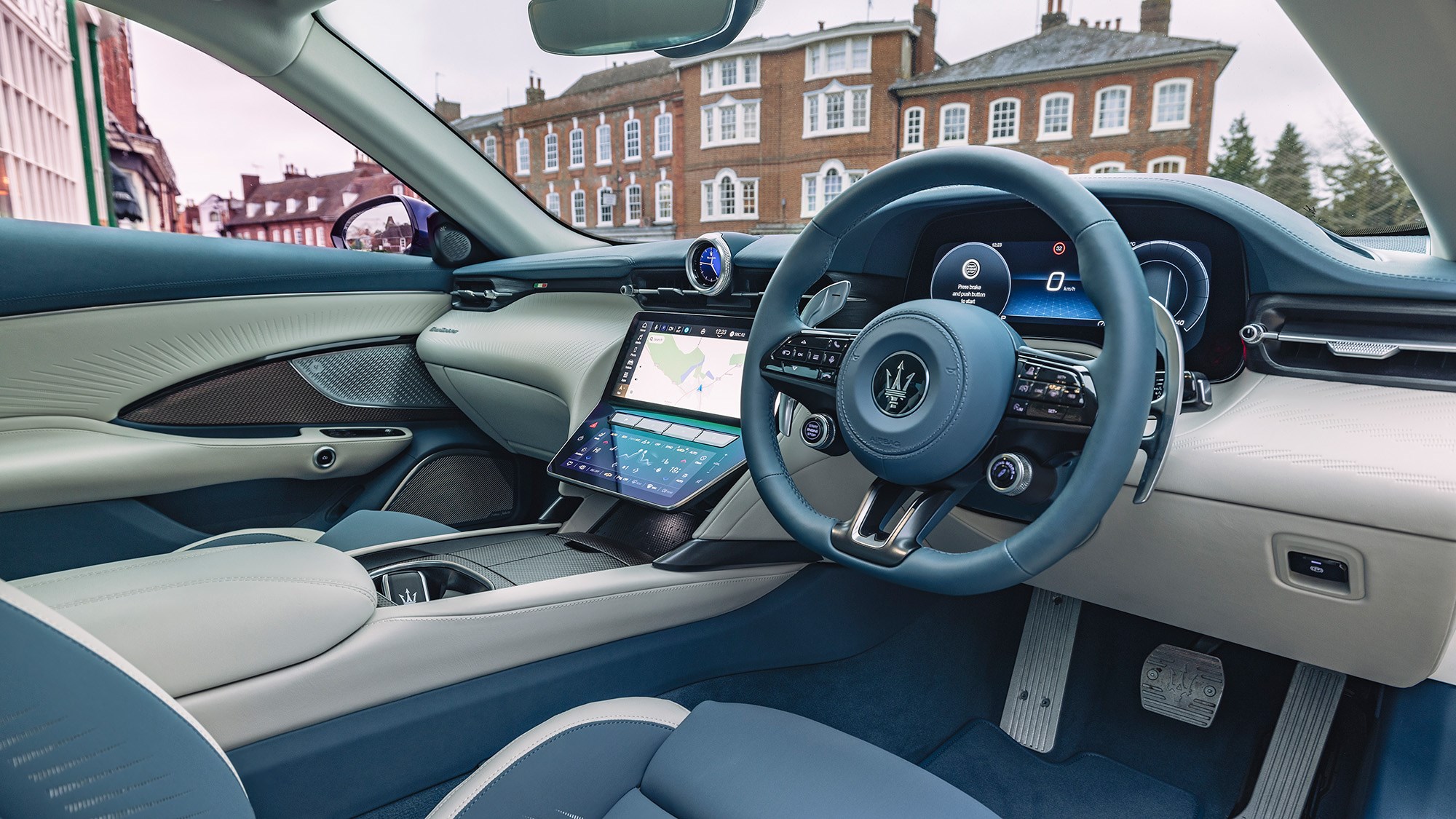
The same goes for the drive selector buttons, positioned between the two touchscreens, as the ‘P’ button was starting to lift from the screen on my 2,500-mile car. And no, there wasn’t any of the usual ‘it’s a pre-prod’ caveat. Steering wheel buttons off a £22,000 Fiat 500e also don’t cut it at this price.
Parkers Deputy Editor, Luke Wilkinson, also found a rather alarming problem with the trims in his Folgore test car. He explained: ‘there’s a trim in the footwell by the leading edge of the door that covers the carpet border but, on my car, it didn’t sit flush with the floor. That meant, when I planted my foot in the firewall, the trim acted like a one-way valve and prevented me from lifting off the pedal.
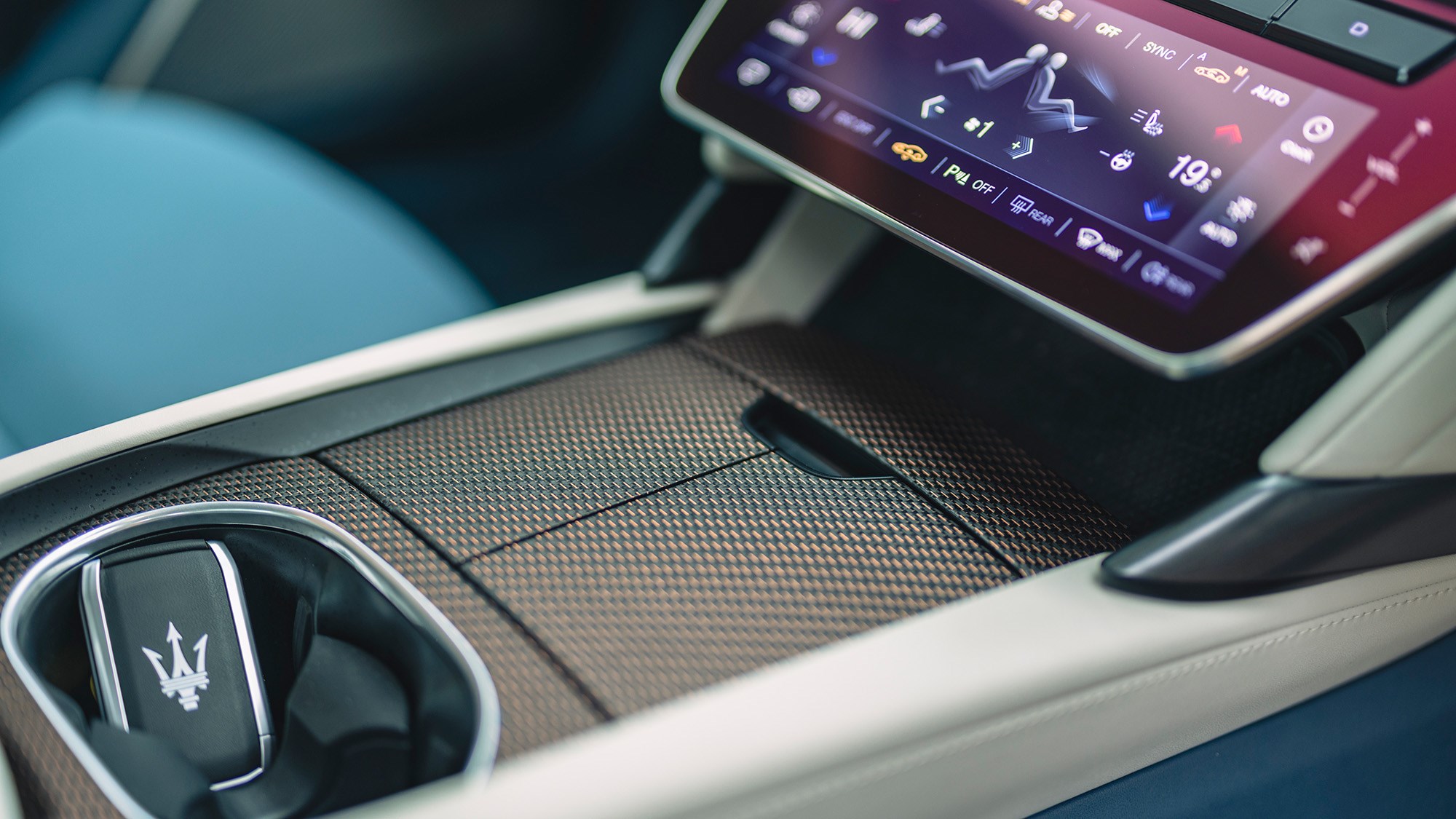
‘There isn’t enough variety in the English language to express the sheer terror of piloting a 700bhp, 2.3-tonne, £200,000 land barge down a British B-road with a throttle that’s stuck wide open. Plenty of four letter words came to mind, repeating any of which here would see me hauled in front of my editor for a stern dressing down.’ You’ve still some work to do then, Maserati.
More pleasingly, the GT feels a far more convincing ‘2+2’ than ever before. Rear space is still tight, and as an adult you wouldn’t want to spend too far back there. But it’s certainly much more usable than before. The boot’s volume has had to shrink because of that massive battery, too, but you could still squeeze a few suitcases back there.
Before you buy (trims and rivals)
There aren’t too many explicitly premium electric GT cars around. The Porsche Taycan Turbo S and Audi RS e-Tron GT Performance don’t offer quite the same glamour, but are perhaps more polished performers. Alternatively, you could go much plusher and luxurious with a Rolls-Royce Spectre.
As we’ve mentioned, the Folgore is the GranTurismo range-topper. Though we understand why it costs so much, stumping up nearly £200,000 more for a car without an engine is likely to be a tough sell.
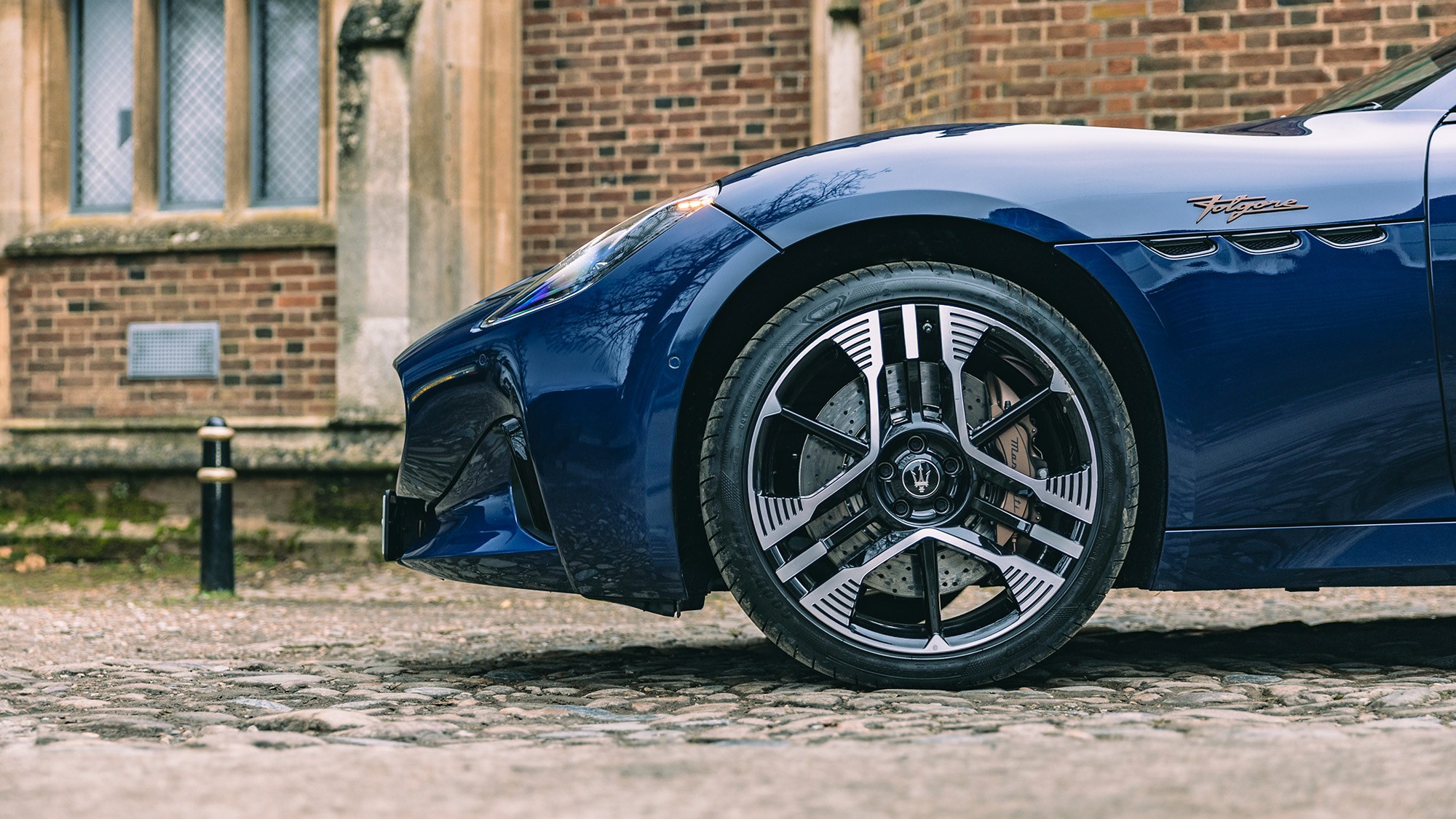
However, we love that it looks just like the petrol car, and retains all the visual charisma the GranTurismo is known for. There’s a slightly different grille and badges, no exhausts (obvs) and some different alloy wheel designs (optional), but aside from that it’s hard to distinguish. It certainly gets a lot of looks at a public EV charger, and you almost feel like you’re ICE-ing a space by doing so. The best-looking EV you can currently buy? Think of something better…
That said, you can now get a GranCabrio Folgore if you want your electric GT car without its roof.
Maserati GranTurismo Folgore verdict
The GranTurismo Folgore is certainly interesting. It’s clearly taken some significant and time-consuming development to get it to drive the way it does, and to disguise its weight so well. The ride and handling balance is superb, as is the execution of its three-motor setup and impressive charging technology. It’s a stellar effort in this respect, especially given the constraints of building it alongside V6 versions.
But while Maseratis have always been known for their character flaws, in 2025 we don’t think buyers would be happy to put up with a faulty touchscreen or clear quality concerns when spending £180,000. A much more special interior would go a long way towards helping the GranTurismo Folgore’s chances, as an electric GT car – no matter how good it may be to drive – remains a tough sell in 2025.